Sometimes Overlooked, Dodge’s 1966-67 Charger Charts Its Own Path
Ask enthusiasts the first thing they think of when they hear “Dodge Charger,” and they’re bound to mention Hellcats or reference the 1968-70 second-generation cars, which were popular in their own right before securing everlasting fame through starring roles onscreen in Bullitt and The Dukes of Hazzard. Chances are slim, though, that the first-generation Charger would come up among any but the most die-hard Mopar fans.
It might be well-hidden in the shadows of the high-flying second-generation and 700+ horse modern siblings, but when properly equipped, the first Charger was able to hold its own on street while offering up design elements and an interior that set it apart from other intermediate-sized muscle of the period. Today, the first-gen car is more affordable and more rare than its more popular ’68-70 successor, and provides a chance to differentiate from what’s become the Charger mainstream.
In the early ’60s, Dodge was looking to liven up its image, and to showcase its upcoming 426-cubic inch Hemi engine. The 1964 Dodge Hemi Charger concept was born, a two-seat roadster built off an existing two-door Polara. Unfortunately, the Hemi suffered from some early production issues, so the car didn’t get one in time for its national tour. It did, however, succeed in creating some buzz for the brand.
That same year, Plymouth rolled out its Barracuda, which was immediately overshadowed by Ford’s launch of the Mustang. Eager to get in on the game, Dodge sought a smaller, youth-oriented model of its own based on the Barracuda, but parent Chrysler Corporation said no—it’d have to make do with an intermediate-sized model instead.
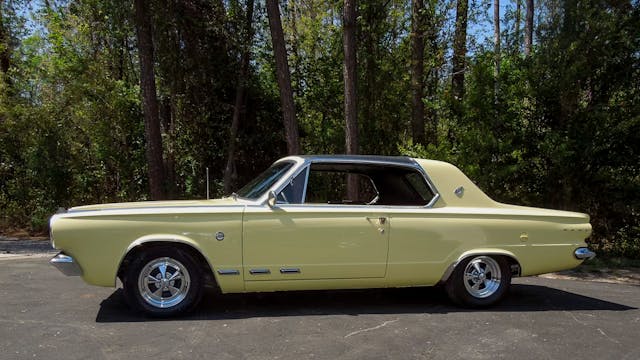
While plans for that car began to get underway, the Charger nameplate first graced a production model in 1965 as a sporty trim level on the “senior compact” Dart. Only 480 Dart Chargers were made, all in yellow (although there is some evidence that one silver car exists), all sporting 273-cubic inch V-8s. In an era when cars received constant visual updates, the Dart’s 1963 redesign was already showing its age, so Dodge teased the upcoming model’s new look with the Charger II concept ahead of the production car’s unveiling.
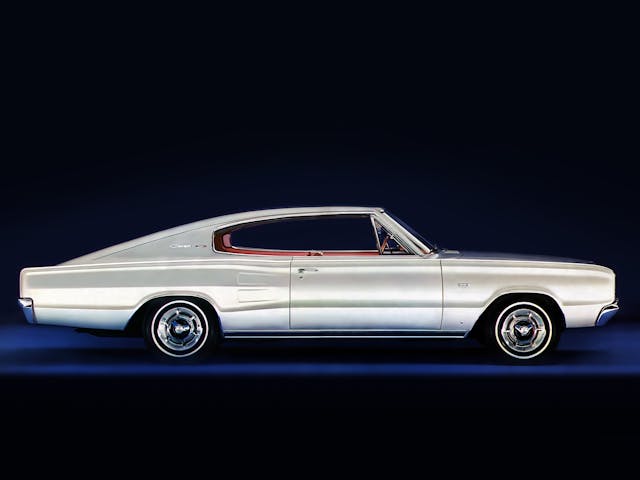
Come 1966, Dodge finally got its sporty coupe. The new Charger was based on Coronet underpinnings and shared much of its front bodywork (along with suspension and brakes) with that model, but was set apart by a striking, large fastback, hidden headlights, and a clean full-width taillight. The swept roofline was distinctive and eye-catching among the more mundane three-box intermediate-size designs of the time, though its looks wouldn’t be considered as sleek, or ultimately as brand-defining, as its 1968 successor.
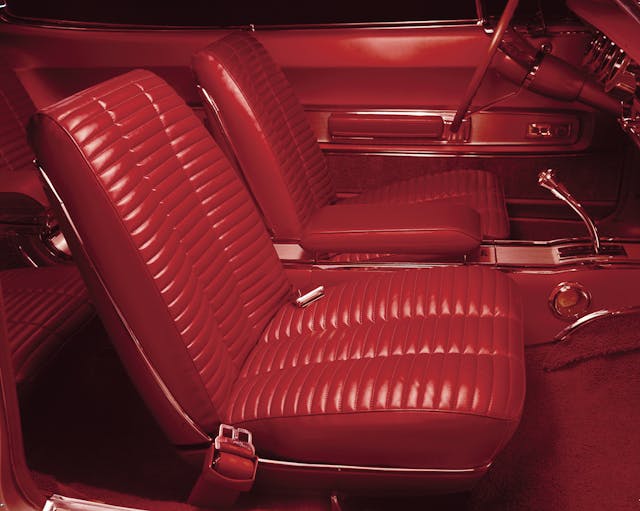
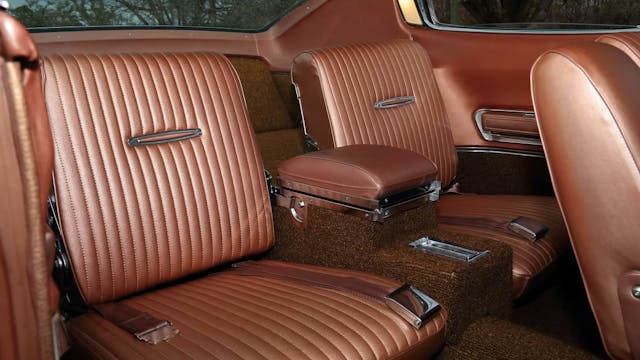
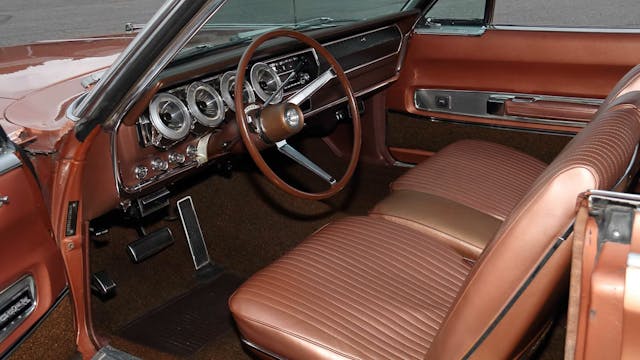
Beneath that roof, Dodge went upscale, sporty, and practical. The Charger’s instruments—four large, blue-backlit gauges—were an exciting change from single-sweep speedometer found in the Coronet. It utilized bucket seats front and rear, along with a center console that stretched the length of the seating area. (The console size would be reduced the following year to help with ingress and egress). Rear buckets weren’t a regular occurrence back then, and they helped separate the Charger from more pedestrian intermediate coupe offerings. Like other fastbacks that were emerging around the same time, those back seats and rear console could fold down, creating a substantial cargo area over seven feet long—Dodge even called it a sports wagon in its advertisements.
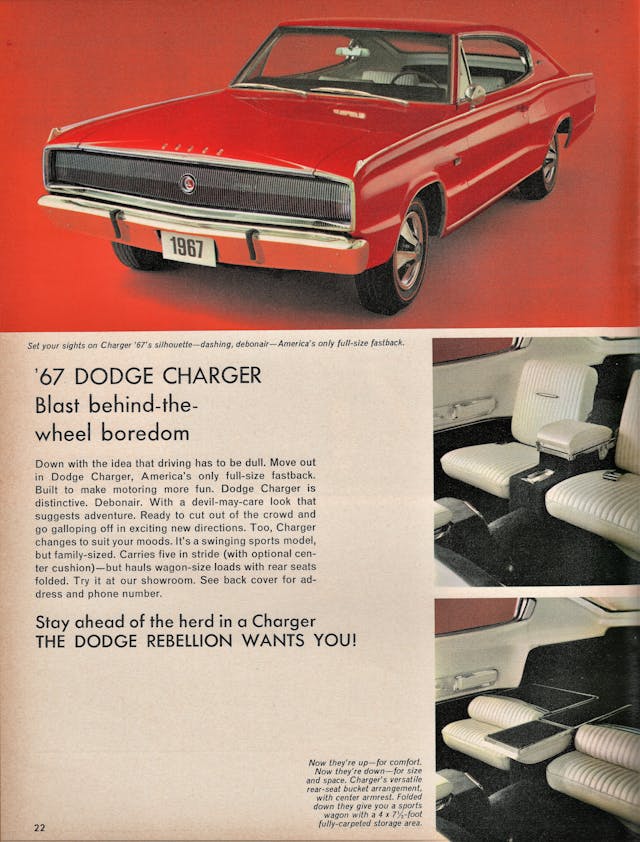
Under the hood, Dodge offered a spread of V-8s: an entry-level 318-cubic inch mill, a 361, 383, and the range-topping 425-horse 426-cubic inch Hemi. All but the 318 (which came with a three-on-the-tree if you wanted a manual) could be had with a console-mounted four-speed manual; the Torqueflite three-speed auto was available across the whole lineup. In 1967, an additional 383 replaced the 361 and a 440-cubic inch engine was added.
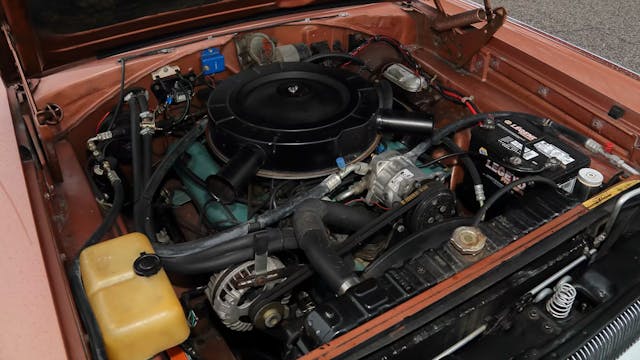
Car and Driver was nonplussed with a 383-equipped Charger they reviewed in their February, 1966 issue, stating, “[t]he Charger is a good automobile, make no mistake about it, but we had somehow expected more when we first got behind the wheel. Maybe it’s because the sporty styling conjured up the fantasy of all sorts of exotic engineering underneath.”
The review has a point—the Charger was effectively a dressed-up Coronet, but, at least on paper, the strategy wasn’t all that different from Ford’s formula for the Mustang, and everyone knew how that worked out. On paper and in execution can be two very different things, however, and like Car and Driver, the public showed only a modest interest in the Charger. Only 37,344 units moved in 1966 and a mere 15,788 sold in 1967.
Dodge was quick to cure this sales flop, though—the 1968 redesign was an instant hit, sending sales flying to 96,100 units. Along with the more attractive—if less daring—bodywork, Dodge simplified things, too, ditching the rear buckets and their folding mechanism, carpeted storage area, and other interior characteristics intended to frame the Charger as a more premium offering.

The public’s muted response to the first-gen Charger back then is reflected in its values as a collector car now, especially relative to the second-gen car. A ’67 with the vaunted 426 Hemi comes in at $119,000 for a #2 (Excellent) condition example; a ’68 in the same condition with the same engine is $39k more. For less powerful engines, the delta is less drastic—there’s a little more than an $8k difference between the ’67 and ’68 high-performance 383s, for instance—but it is present across the board. All first-gen Chargers experienced a valuation bump during the pandemic, but they have stayed flat since.

Despite playing second fiddle, our data show that first-gen Chargers are seeing an uptick of among Gen X and Gen Z, and quote count overall is steady. Value trends and quote count paint the picture of a collector car with a limited but committed audience.
Given modern standards, no potential buyer would be disappointed by the lack of performance differentiation between the first-gen Charger and the more plain Coronet—people buy this car because they appreciate the experience it provides. Dodge took a chance with this initial Charger, and although they ultimately had to make corrections to ensure the its viability, the ’66-’67 model remains an intriguing and thoughtfully created classic. The handsome if imperfectly proportioned design either appeals or it doesn’t; and along with its more upscale and specialized interior, it’s very much a different kind of car than subsequent models. If you’re looking for a Mopar model with a little more flair, or a Charger that marches to a different tune, the first-gen Charger might be right for you.
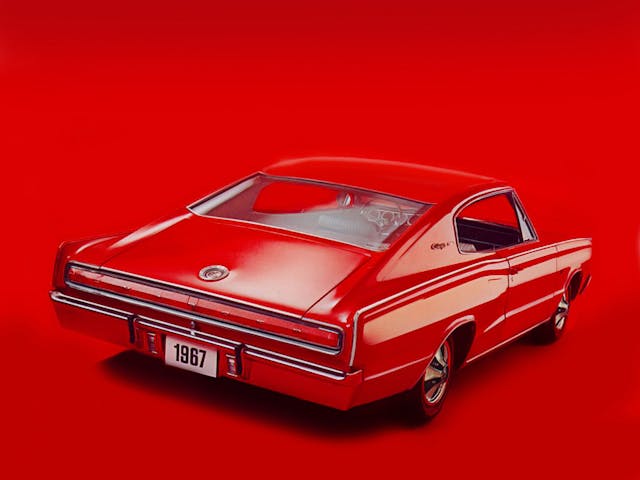
***
Check out the Hagerty Media homepage so you don’t miss a single story, or better yet, bookmark it. To get our best stories delivered right to your inbox, subscribe to our newsletters.
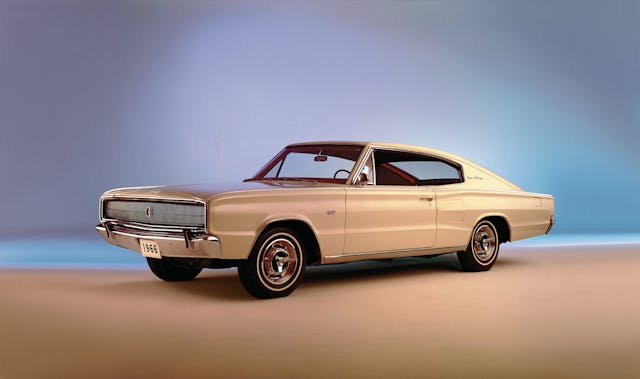


Let’s play Jeopardy!
“The second generation Barracuda, First generation Charger”.
What are forgotten MOPAR performance cars of the ’60s?”.
When working with a long time collector car auctioneer and collector, I had to remind him of the 2nd gen Barracuda. It had completely slipped his mind.
Steve – True however. The comments were concerning the similarities between the Mustang and Charger as stated in this article. So the Torino seemed a bit better comparison. ( I also had a 68 GT so my mind immediately went there first) Barracuda/ Mustang , Charger, in retrospect the 68 Galaxy 500 XL fastback maybe a better comparison. So yes the Charger came first. That was during the period when Nascar was debating what should be considered stock and what not. Allowing full frames put under factory unibodies. So I wonder if the manufacturers weren’t hedging their bets and producing both in anticipation of what may or may not be allowed. Anybody know?
A friend of mine had a 66 with a 426 and a 3 speed automatic in the console. That car was sick. He ended up selling it in the early 80s for $500 and it was a pretty clean example.
I’m partial toe the 68-70 models but would be happy to experience a 66 or 67 with a 383 and a 4 speed. Why do you always quote the subjective Car and Driver instead of the more objective R&T, Car Life or more fun Sports Car Graphic? Opinions only go so far on a review. Objectivity is a must and then you can throw in some opinions. The reply/comment section is where the opinions go.